Cleanroom Protective Clothing Options
6 min readIt’s estimated that about 80 percent of the impurities present in cleanrooms come from people. And while surfaces and equipment can be sterilized, the same can’t be said for the employees who use the rooms. Whether we realize it or not, we’re constantly shedding skin flakes, microbes, hair, textile fibers, dust, and cosmetic particles. It happens when we’re standing still, but even more so when we’re moving around, talking, and coughing. Normally, it’s completely unnoticeable, but it can cause serious problems in controlled environment operations that must remain free of contaminants.

What Is Cleanroom Protective Clothing?
One of the most effective ways to reduce or eliminate contamination resulting from people is to use protective clothing – and to use it correctly. This clothing acts as a particulate barrier that helps prevent contaminants from entering the work environment.
Cleanroom clothing comes in many forms, including:
- Coats and trousers
- Coveralls
- Hair covers and hoods
- Face masks and goggles
- Shoe covers and boots
- Gloves
Reusable vs. Disposable Clothing
In many instances, reusable clothing is the best option for cleanrooms. It’s durable, gentler on the environment, and can reduce costs by almost 30 percent when compared to disposable options.
For workers who use cleanroom clothing frequently, reusable is probably the way to go. The clothing can either be laundered at a manufacturer’s on-site laundry or be sent to an ISO-certified garment processing facility.
On the other hand, if workers only use cleanroom protective clothing infrequently – say, once a month or less – it might be more cost-effective and practical to use disposable wear (learn about The difference between single-use, limited use, and reusable chemical protective garments ).
Given the potential savings, it’s certainly worth evaluating your circumstances and options before deciding which route to go.
Things to Consider When Selecting Cleanroom Clothing
As per usual when it comes to PPE, there is no one-size-fits-all solution for cleanroom protective clothing. And whether you’ve opted for reusable or disposable clothing, there are some key things you’ll want to look out for.
Begin by identifying the ISO class of the cleanroom to determine minimum garment recommendations. From there, you’ll want to look at two main features: fit and fabric.
Fit
Cleanroom protective clothing must be comfortable to wear and should be easy for workers to put on and remove.
If the garments are too snug, it can create discomfort and restrict worker movement. If they’re too big or baggy, they can become a burden while workers are carrying out tasks or even get caught in machinery.
Fabric
Material selection should be based on the following properties:
- Thickness
- Weight
- Flexibility
- Filtering/barrier properties
- Comfort
- Strength and durability
There are a handful of commonly used materials for cleanroom clothing, each with varying benefits and drawbacks.
- Single-layer polypropylene (also known as PP) is a thermoplastic polymer that’s in nearly every type of disposable garment. Single-layer PP garments tend to be the lowest cost, and caps, beard covers, and low-cost lab coats often have this kind of single-layer construction.
- SMS is also made of polypropylene, but it’s three layers instead of one. The material consists of a layer of melt-blown PP sandwiched between two layers of spun bound PP. The result is a material that is extremely durable, resistant to liquid, breathable, and fairly low-linting.
- Spunbound polypropylene is lightweight and breathable, It is best used in the food industry or other applications where contamination isn’t a major concern.
- PE-coated polypropylene offers the same protection as spun bound polypropylene, but with an additional liquid protective layer.
- Polyethylene is a good short-term barrier but offers poor moisture vapor transmission.
- Microporous garments are made of PP laminated with a layer of polyethylene. They are of the highest durability, impervious, extremely clean, and perfect for the most critical environments.
High-performance and high-density reusable fabrics may also boast specific characteristics, including polyester/carbon yarns to control static, splash protection, and broad-spectrum antimicrobial properties to control microbial growth.
Safety Standards and Rules to Know
OSHA standard 29 CFR 1910, more commonly known as the General Industry Standard, outlines a variety of cleanroom requirements, but only one specifically pertains to cleanroom protective clothing. The standard dictates that employers must provide PPE for the eyes, face, head, and extremities, and these garments must be used and maintained in sanitary and reliable conditions.
The PPE may include:
- Protective clothing
- Respiratory devices
- Protective shields and barriers
It’s important to note that not all cleanrooms fall under standard 1910, so employers should double-check the requirements they need to follow.
Final Thoughts
The process for selecting cleanroom protective clothing should be much the same as selecting other protective gear. Assess your needs, identify your options, and then select the products that best meet your requirements.
You can’t disinfect and sterilize human workers, but you can provide them with the most effective cleanroom protective clothing – and that’s almost just as good.
DuPont™ Tyvek® IsoClean® Coverall
Tyvek® IsoClean® delivers an ideal balance of protection, durability, and comfort. Made using a patented flash spinning process, Tyvek® provides an inherent barrier to particles, microorganisms, and non-hazardous light liquid splash.
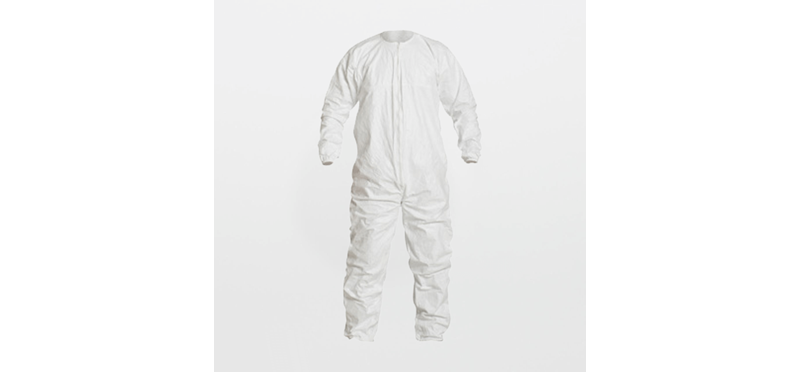
Ansell S-BDSH Drop-Down Sterile Garment With Hood
The Ansell S-BDSH Drop-Down Sterile Garment delivers exceptional comfort and protection you need in the cleanroom workplace. Its antistatic and low-linting design is ideal for getting the best results.
Features:
- Exceptional comfort and protection
- Antistatic & low-linting
- Unique up and over design
- Aseptic donning technique
Specs:
- MATERIAL: Antistatic BioClean-D™ CleanTough white material
- Color: White
- CONSTRUCTION: Bound seams with single needle stitching
- CHARACTERISTICS: Antistatic to EN 1149-5* & low particulate
- COMPATIBILITY: ISO Class 4 & EU GMP Grade A
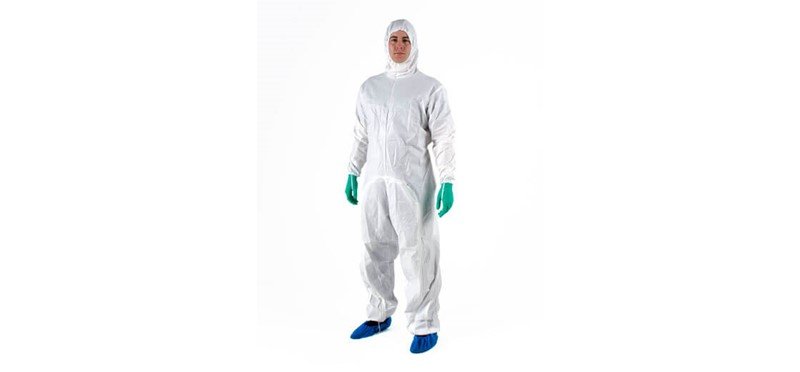
DuPont™ Tyvek® IsoClean® Shoe Cover
Get the footwear that’s perfect for cleanroom operations with the DuPont™ Tyvek® IsoClean® Shoe Cover. Featuring serged seams, a PVC sole and an elastic opening for guaranteed protection. Plus the elastic toe gives you the stretch you need, plus it rests 5″ high on the ankle.
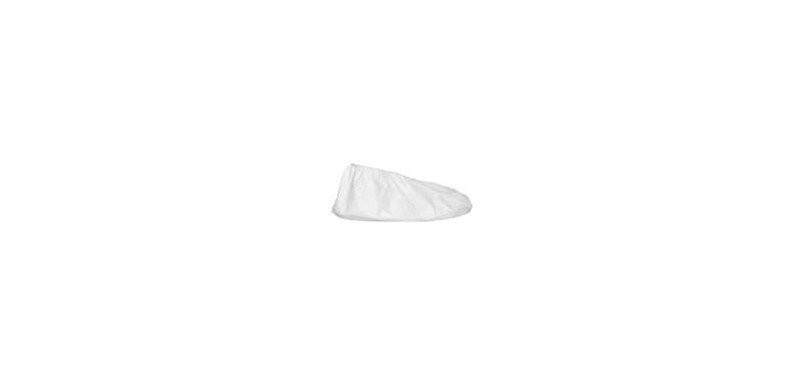
Ansell BCAP Clearview Autoclavable Panoramic Goggles
The Ansell BCAP Clearview Autoclavable Panoramic Goggles feature a thermoplastic rubber frame, toughened polycarbonate lens and a latex-free silicone headband with polypropylene hooks.
Features:
- Indirect ventilation system
- Optically correct
- Extra-wide field of vision
Specs:
- MATERIAL: Thermoplastic rubber frame, toughened polycarbonate lens, latex-free silicone headband with polypropylene hooks
- Color: White frame and translucent strap
- CLASSIFICATION: EN 166:2001 Optical Class 1
- COMPATIBILITY: ISO Class 4 & EU GMP Grade A
- STERILIZATION: Provided non-sterile. To be autoclaved at 121°C/250°F for 30 minutes
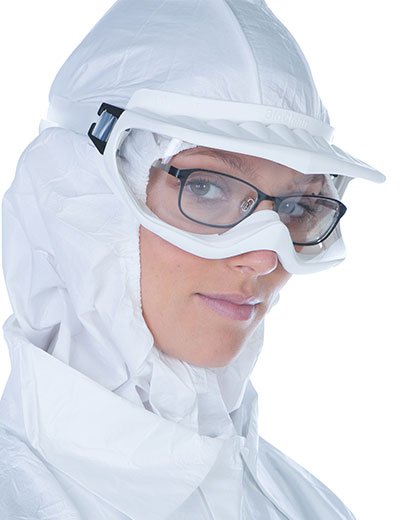
DuPont™ Tyvek® IsoClean® Sleeve
Get the one-size-fits-most DuPont™ Tyvek® IsoClean® Sleeve that features an ideal balance of protection, durability, and comfort. Designed with a patented flash-spinning process, the Tyvek® IsoClean® Sleeve safeguards the user from all types of particles, microorganisms, and non-hazardous light liquid splash.
Features:
- Garments are gamma sterilized to SAL of 10-6
- Bound seams are covered with garment fabric to reinforce the seam and to reduce the potential for particle penetration
- Elastic at both ends (bicep and wrist) for arm protection
- 18″ long
- One size fits most
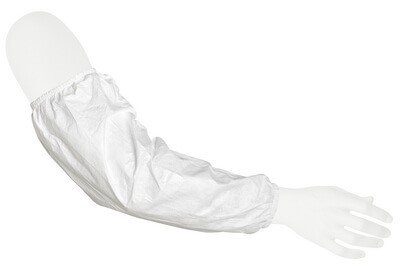
Ansell TouchNTuff 73-500 Sterile Neoprene Disposable Glove Compatible with Class 100 (ISO 5) Environments
The Ansell TouchNTuff 73-500 Sterile Neoprene Disposable Glove offers enhanced tactile sensitivity and safeguards against chemical splash from a broad range of chemicals. Ideal for double donning. The TouchNTuff 73-500 glove is ideal for Class 100 (ISO 5) cleanroom wet and dry applications
Features:
- Compatible with Class 100 (ISO 5) / Grade A Cleanroom Environments
- Thin design for superior tactile sensitivity
- Broad chemical splash resistance
- Ideal for double donning
- Prevents Type I and Type IV allergies
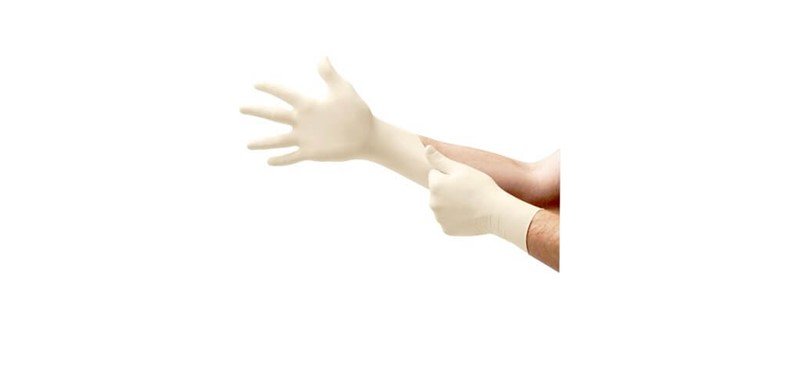
Lakeland CleanMax Cleanroom Apparel
Lakeland CleanMax Cleanroom Apparel provides the comfort, quality, and protection you need with the confidence of over 30 years as a leading manufacturer of disposable protective clothing options.
All Lakeland CleanMax Apparel is:
- Chemical Penetration Resistance to oils, bleach and 50% Sodium Hydroxide
- Resistant to blood and body fluid penetration
- Resistant to viral penetration • Resistant to Blood Borne Pathogens
- IEST-RP-CC003 Category I Particle Cleanliness
- Latex and Silicone Free
- Compatible with ISO Class 4 -8 Cleanrooms and all Controlled Environments
- Individually packaged and protective outer bag for ante areas
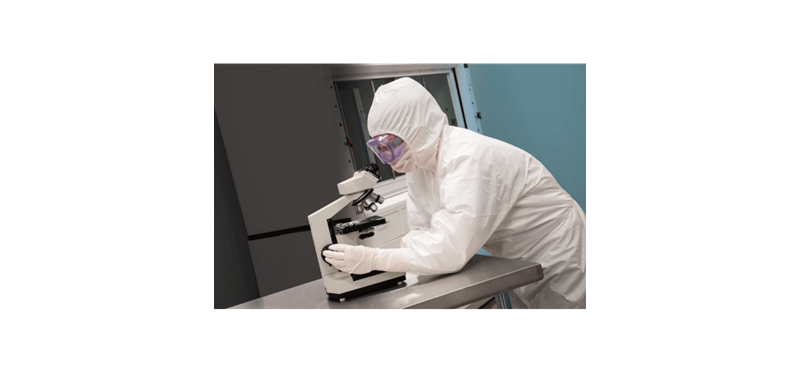
Ansell Validated Sterile NITRILE RABS and Isolator Gloves
The Ansell Validated Sterile NITRILE RABS and Isolator Gloves are cleanroom laundered in Ansell’s ISO 4 facility. The Validated Sterile NITRILE RABS and Isolator Gloves are available in multiple sizes to fit circular and oval ports including most standard sizes.
Features:
- Excellent alternative to CSM
- FDA approved polymer
- Superior dexterity and user comfort
- Rated for 8+ hours against permeation by many cytotoxins, meet/exceed ASTM D6978-05
- Validated Sterile According to ANSI/AAMI/ISO 11137:2003
- Sterility Assurance Level – 1 in 1,000,000 – SAL 10-6
- Particulate and extractables test method: IEST RP CC 0053
- Performs well with both VHP (Vaporized Hydrogen Peroxide) and IPA (Isopropyl Alcohol)
- Maybe Autoclaved
- 3-year shelf life




